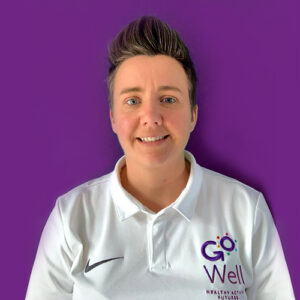When children are at school they take part in both Physical Education (recommended 2 hours per week) AND physical activity (recommended 30 minutes a day in school).
There are distinct differences between the two:
Physical Activity is ‘…all bodily movement that uses energy’ (AfPE)
Physical Education…’ takes place in a school curriculum…and involves learning to move and moving to learn’ (AfPE)
Benefits of each
Both types of movement provide many benefits for young people:
Benefits of Physical Activity | Benefits of Physical Education |
1. Improve physical health and fitness
2. Improve mental health and well being
3. Improve cognitive function
4. Reduce the risk of some diseases
5. Social interaction with friends and family members
6. Ease of access – scope for all to be involved as there will be no financial cost, equipment not always necessary.
| 1. Points 1-5 of Physical Activity benefits
2. Improved physical literacy
3. The knowledge and understanding of how to lead a healthy lifestyle
4. Developing wider skills – eg: leadership, communication skills, resilience, teamwork, confidence and social skills
5. Acquiring the technique to perform individual transferable physical skills; being given the chance to develop them and put them into practise in a variety of environments
6.Evaluating skills; recognising what is good and what requires improvement and how to go about this
7. Breadth of opportunity – being able to unlock possible potential through a rich menu of high quality experiences
8. Personal targets and challenges and how to set these, to help individuals to achieve and make progress
|
Examples of Physical Activities | Examples of Physical Education Activities |
Going for a walk, jog or run Going on a bike ride Doing the housework Doing some DIY Gardening Taking part in a fitness class Recreational sport | A wide variety of sports and activities – Games, Swimming, Gymnastics, Dance, Outdoor Education Adapted games and activities that have a key objective Learning rules and regulations Being a sports leader Refereeing, umpiring and officiating Potential to gain qualifications not only in PE but also in leadership and officiating
|
There is some clear overlap between the two.
When children take part in Physical Education they are likely to also be physically active. However, when children take part in physical activity, there may not be strong elements of learning taking place, that would equate to that within a Physical Education session. Learning is the key element of Physical Education.
Many children and parents are currently grappling with the demands of ‘home learning’. Providing physical activity and Physical Education opportunities within this can be helpful not just for physical health and physical literacy but also for looking after mental health and creating a readiness to complete academic work set.
Our suggestion while learning at home, is to find the balance that suits you best, but to try to include both Physical Education and physical activity opportunities. A good aim would be to meet the Chief Medical Officers guidelines of 60 minutes of activity a day and split that between physical activity and Physical Education. You could do this in a variety of ways, for example:
20 mins Physical education per day, 40 mins physical activity per day
2 days Physical Education focus, 3 days physical activity focus
There are a range of resources available to support parents to encourage their children to be active at home. A good selection of these can be found on the Active 30 Durham Hub (open to all – link below).
Top tips for delivering Physical Education based activities at home
Use a Physical Education based resource
Give demonstrations to your child (or ask other siblings to) to show good technique
Ask your children questions during the activity such as “How does it feel? How can you improve your technique? When would you use this?”
Have lots of fun interacting with your child and watching them achieve and learn new things!
Practise to improve and be proud of all achievements!
Good luck!
This blog was a collaboration between multiple members of the Go Well team. For more information email info@go-well.org.
Further links that may be helpful
AfPE Importance of Physical Education, School Sport and Physical Activity Resources
Other blogs that may be useful
5 ideas for schools to support physical activity at home
Why moderate to vigorous intensity exercise is important for children and how to measure it


